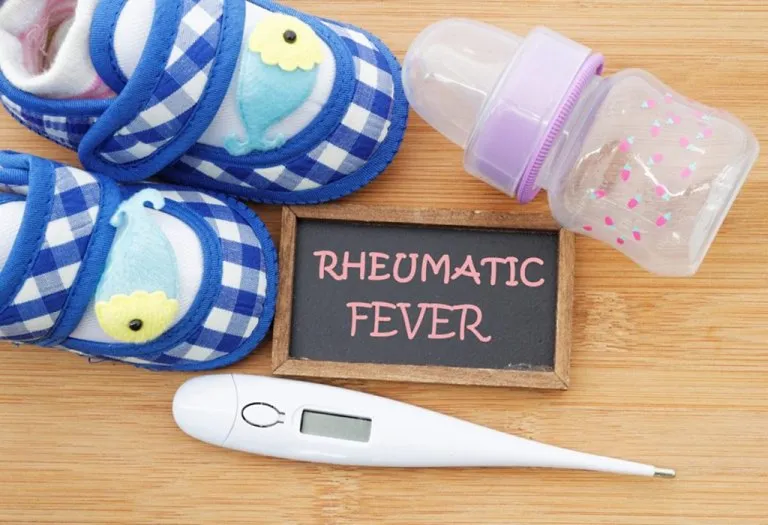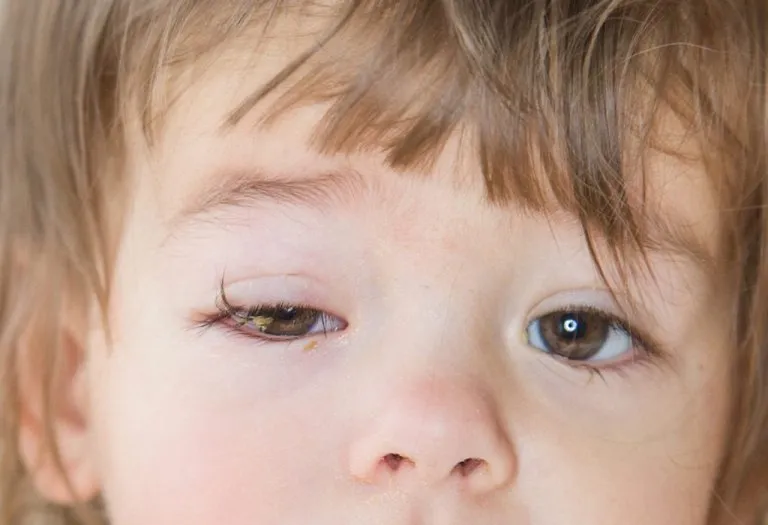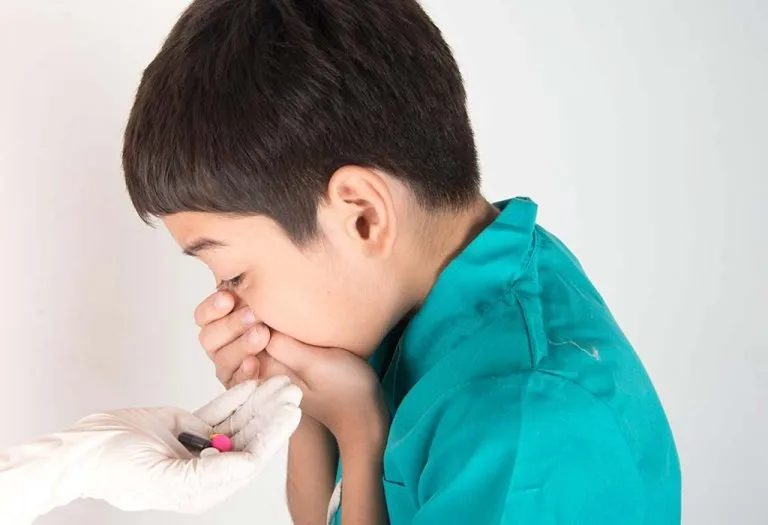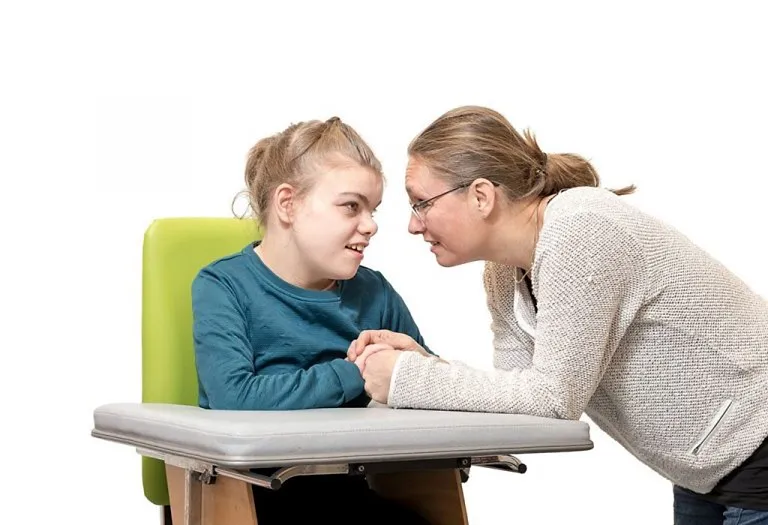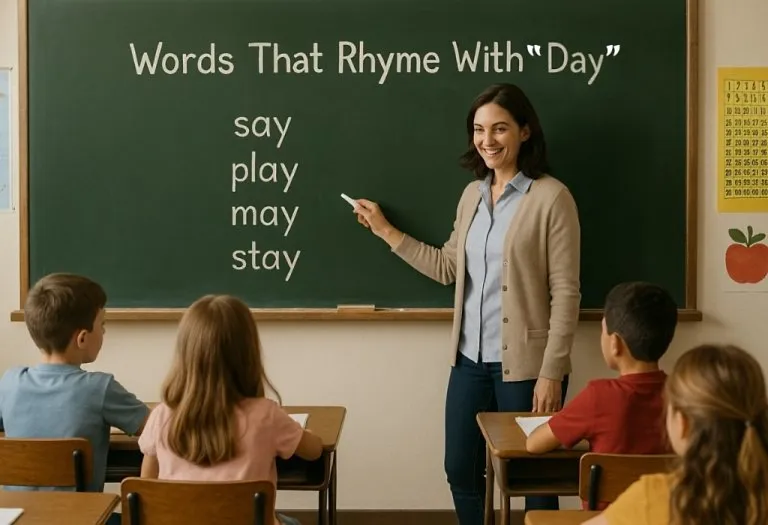Rheumatic Fever in Children – Causes, Diagnosis and Treatment
Rheumatic fever is a severe illness that usually affects children between the ages of 5 and 15 years, according to the Mayo Clinic (1). This disease usually develops after a particular case of a sore throat and can affect the heart health of the child. It is not limited to age; it can affect younger people and adults as well. Also known as acute rheumatic fever in children, this autoimmune condition occurs when an individual’s immune system responds negatively to a scarlet fever infection or an untreated strep throat infection. To know more about strep throat rheumatic fever, stay with us as we navigate through the causes, symptoms, diagnosis, and prevention of this acute disease.
What Is Rheumatic Fever?
Rheumatic fever is an inflammatory disease that is usually caused by the improper treatment of any condition caused by the Streptococcus bacteria (group A strep or GAS), such as throat or skin infection. According to the Cleveland Clinic, it is basically the overreaction of the immune system to the untreated scarlet fever infection or strep throat infection that is caused by group A Streptococcus (2). It develops within 10 to 21 days after the initial infection and affects the joints, skin, heart and even the brain.
Is Rheumatic Fever Contagious?
No, rheumatic fever is not contagious, even though Streptococcus bacteria is contagious which causes strep throat and scarlet fever infections (3). This is because rheumatic fever is the reaction of the immune system to the bacteria in the body.
Causes of Rheumatic Fever in Kids
One of the main causes of rheumatic fever in kids is the occurrence of an infection caused by Streptococcus bacteria (Group A Streptococcus), such as scarlet fever, impetigo, cellulitis, and strep throat. While the bacteria do not cause rheumatic fever, they spark off an autoimmune response in the body that is called rheumatic fever. The body targets its own cells or tissues in the central nervous system, heart, joints, and skin (4). This is suspected due to the molecular mimicry between the bacterial component (M protein of the bacteria being the most common) and the human tissue cells (in heart, joints, brain, etc.). Some studies have shown a correlation between genetics and the occurrence of this fever.
Who Is At Risk of Rheumatic Fever?
This fever most commonly afflicts children between the ages of 5 and 15 years, according to Stanford Medicine. The biggest risk factors for rheumatic fever are strep throat and infection, which causes pain and inflammation in the throat. So, if an individual has frequent strep throat infections, untreated strep infections, or has a family history of rheumatic fever, then they are at a high risk of contracting this autoimmune disease (5). Other conditions include pyoderma, which is the infection of the skin by the bacteria.
Rheumatic Fever Symptoms in Children
The symptoms of rheumatic fever in children can be hard to pin down as they will change over the course of the illness. Depending on the individual illness, all the symptoms, or just a few, will be observed. Some of these symptoms are (3) (6):
- Fever of more than 101 degrees – If your child has a consistent fever with a temperature over 101 degrees Fahrenheit, it could be a symptom of the ailment. It is recommended that you seek medical help immediately if the fever persists beyond an afternoon or at most a day.
- A sore throat with or without swollen lymph nodes – Rheumatic fever is commonly accompanied by a sore throat. This can include the lymph nodes being swollen as well. A sore throat alone, however, is not a sign of this condition and has to be accompanied by a high fever and at least one more symptom.
- Headache – A mild to a severe headache combined with the fever can indicate rheumatic fever. This, however, is not conclusive.
- Nausea – While this symptom can be confused with a gastric condition, if it accompanies a sore throat, then you must get your child tested.
- Vomiting – Be sure to administer oral rehydration while you wait for a doctor’s attention.
- Nosebleeds – This symptom is not too common and occurs rarely.
- Pain in the joints – Pain in the joints, particularly the knees, elbows, wrists, and ankles, with a characteristic property that it migrates from one point to another in the body.
- Bumps below the skin – Also called subcutaneous nodules, these bumps are usually painless.
- Pain in the chest – This usually indicates that the heart has been affected by the fever, although it is rare.
- Heart murmur – More often than not, one or more valves of the heart are affected by rheumatic fever, and can cause arrhythmia, or heart murmurs.
- Fatigue – Fatigue is a result of all the joint pain and other aches in the body.
- Jerky movements – Called as chorea (Sydenham chorea and athetosis), these movements are uncontrollable.
- Unusual behaviour – Behaviour, such as laughing or crying at inappropriate moments usually caused by the fever getting to the head.
- Rash – Serpiginous lesions with pale centres that are not itchy can often develop. Rash in rheumatic fever is easy to suspect.
Diagnosis of Rheumatic Fever in Children
When you take your child to the paediatrician, the first thing he/she will make a note of is your child’s medical history. The doctor will also check to see if your child has had a recent bout of strep throat and conduct a physical examination that will include the following:
- Look for rashes on the body, which will feel like hard bumps under the skin.
- Listen to the heart to check for any abnormalities.
- Conduct a few movement tests to check the nervous system.
- Check for inflammation in the joints.
- May prescribe blood tests to see if there is a strep infection.
- Prescribe electrocardiogram and echocardiogram to check for any abnormalities in the heart.
Doctors follow the Jones Criteria to diagnose rheumatic fever. To make the diagnosis, two major criteria or one major and two minor criteria and laboratory evidence of group A streptococcal infection are required. Some of these symptoms are already given above, but here’s a tabular form for reference.
| Major Criteria | Minor Criteria |
| Arthritis | Fever |
| Heart Inflammation | Joint Pain or Sore Joints |
| Subcutaneous Nodules | Rheumatic Fever History |
| Sydenham’s Chorea | Changes in Electrocardiogram |
| Serpiginous Lesions | Elevated ESR (erythrocyte sedimentation rate) or CRP (C-reactive protein) |
Evidence of previous group A streptococcal (GAS) infection include:
- Recent scarlet fever.
- Positive throat culture for group A streptococcal.
- Positive rapid throat test for group A streptococcal.
- Elevated anti-strep antibodies titer.
Source: https://www.ncbi.nlm.nih.gov/pmc/articles/PMC5911656/
Risks and Complications
Rheumatic fever can last for a long time, going up to a few months, and can have several long-term effects if not monitored closely. These complications include (7):
- Rheumatic heart disease (8) (9)
- Narrowing of a heart valve
- A leak in a heart valve causing the blood to flow in the wrong direction
- Heart muscle inflammation that causes the muscles of the heart to weaken
- Irregular heartbeat
- Heart failure
- Sydenham chorea, which leads to jerky, uncontrollable movements of the muscle
Treatment for Rheumatic Fever in Children
The treatment plan for rheumatic fever will mainly involve fighting the streptococcus bacterial infection and management of the symptoms.
1. Antibiotics
Antibiotics will be prescribed in order to fight the infections. The course is usually 5-10 days. Your doctor will also recommend long-term prophylactic antibiotics in order to ensure that the infection does not repeat again. This can last up to five to ten years (10).
2. Anti-Inflammatory
One of the main symptoms of rheumatic fever is inflammation of different parts of the body. The paediatrician will put your child on an anti-inflammatory treatment.
3. Anticonvulsants
If your child is experiencing uncontrollable, jerky movements, then the doctor will prescribe anticonvulsants to control the movements.
4. Bed Rest
Bed rest may be warranted in the early stages, especially if the heart is involved majorly. But long-term rest is not required, and the child can resume all activities as allowed by the doctor.
5. Aspirin
Long-term blood thinners in the form of aspirin could also be part of the treatment. This is to ensure that blood flowing through the affected valves in the heart does not clot and obstruct small blood vessels in organs like the brain, kidneys, etc.
Is Rheumatic Fever Reversible?
The chances of your child developing the fever again are highest in the first three years of contracting it for the first time, especially if the living conditions are poor with exposure to pathogenic Group A Streptococcus (GAS) strains and there is a lack of medical access (11). With time, however, as your child grows older, the chances of the reoccurrence will decrease. Once your child is 21 years old, your child’s doctor might decide to stop the antibiotic prophylaxis treatment entirely or continue for a lifetime, depending on the then condition (1). The duration is usually 5-10 years, depending on the severity of the disease.
Prevention of Rheumatic Fever in Children
The only way to avoid rheumatic fever in your child is to ensure that any incidence of strep throat is fully and quickly treated. Be sure to get medical attention and schedule follow-up visits with your child’s doctor in order to determine if the infection has gone away fully. You must also make sure that the entire course of medications is taken.
In order to avoid incidences of strep throat, here’s what you can do:
- Teach your child the importance of covering their mouth and nose when sneezing or coughing. Rheumatic fever is not contagious, but strep throat is.
- For a sneeze or to blow the nose, use a tissue once and then throw it away. Do not use a tissue twice. Wash your hands after that.
- Teach your child to wash their hands regularly, especially before and after eating food.
- If your child is sick, then do not send them to school. Conversely, do not let your child play or interact with other children who are sick.
- Make sure that your sick child’s things are not shared with anyone else unless it has been washed and sterilised.
- Take medical treatment immediately for contagious scarlet fever and strep throat infection.
- Finish the course of antibiotics prescribed by the doctor for strep throat or scarlet fever infection.
When to See a Doctor?
If you suspect your child has any of the following signs, then do not waste time and get them diagnosed by a medical expert immediately:
- Sore throat lasting more than three days
- Loss of appetite, especially if swallowing is difficult
- Swollen lymph nodes in the neck
- Sandpaper-like red rash
- Fever
- Swollen, red, or spotted tonsils
- Headache
FAQs
1. Who is the risk of developing rheumatic heart disease?
According to Johns Hopkins Medicine, children who often get strep throat infections that are not treated effectively are at the risk of developing rheumatic fever as well as rheumatic heart disease (12).
2. Can adults contract rheumatic fever?
Although rare, there is a slight possibility of adults contracting rheumatic fever.
3. How can I help or assist my child living with rheumatic fever?
The possibility of the resurgence of rheumatic fever stays for at least three years after the first infection, which decreases with time and age. The course of antibiotics will continue every month to mitigate the possibility of having the disease again. By 18 years, the antibiotic therapy may be stopped, or if the infection continues, the treatment may continue as well. Rigorous follow-up with your little one’s doctor will be required.
Rheumatic fever can have severe implications on the health of your child’s body. Making sure that your child gets an adequate amount of medical attention is key to managing this condition. Follow the basic rules of hygiene in order to avoid a streptococcus bacteria infection, which is the precursor to the disease.
References/Resources:
1. Rheumatic fever; Mayo Clinic; https://www.mayoclinic.org/diseases-conditions/rheumatic-fever/symptoms-causes/syc-20354588
2. Rheumatic Fever; Cleveland Clinic; https://my.clevelandclinic.org/health/diseases/16616-rheumatic-fever
3. Rheumatic Fever; Boston Children’s Hospital; https://www.childrenshospital.org/conditions/rheumatic-fever
4. Rheumatic Heart Disease; CarleHealth; https://carle.org/conditions/pediatric-conditions/rheumatic-heart-disease
5. Rheumatic Fever; Stanford Medicine; https://www.stanfordchildrens.org/en/topic/default?id=rheumatic-fever-90-P01728
6. Weinberg. G. A; Rheumatic Fever; MSD Manual Consumer Version; https://www.msdmanuals.com/en-in/home/children-s-health-issues/bacterial-infections-in-infants-and-children/rheumatic-fever
7. Pediatric Rheumatic Fever; Children’s National; https://www.childrensnational.org/get-care/health-library/rheumatic-fever
8. Rheumatic Heart Disease; Cleveland Clinic; https://my.clevelandclinic.org/health/diseases/21485-rheumatic-heart-disease
9. Carapetis JR, Beaton A, Cunningham MW, Guilherme L, Karthikeyan G, Mayosi BM, Sable C, Steer A, Wilson N, Wyber R, Zühlke L. Acute rheumatic fever and rheumatic heart disease. Nat Rev Dis Primers.; PubMed Central; https://www.ncbi.nlm.nih.gov/pmc/articles/PMC5810582/; January 2016
10. Weinberg. G. A; Rheumatic Fever; MSD Manual Professional Version; https://www.msdmanuals.com/en-in/professional/pediatrics/miscellaneous-bacterial-infections-in-infants-and-children/rheumatic-fever
11. Kumar. N; Rheumatic Heart Disease Is It Reversible?; JOURNAL OF INDIAN COLLEGE OF CARDIOLOGY; https://journals.lww.com/jicc/fulltext/2021/11040/rheumatic_heart_disease__is_it_reversible_.1.aspx; October-December 2021
12. Rheumatic Heart Disease; Johns Hopkins Medicine; https://www.hopkinsmedicine.org/health/conditions-and-diseases/rheumatic-heart-disease
Recurrent Fever in Kids
Viral Fever in Children
Fever at Night in Children
Respiratory Rate in Kids
Was This Article Helpful?
Parenting is a huge responsibility, for you as a caregiver, but also for us as a parenting content platform. We understand that and take our responsibility of creating credible content seriously. FirstCry Parenting articles are written and published only after extensive research using factually sound references to deliver quality content that is accurate, validated by experts, and completely reliable. To understand how we go about creating content that is credible, read our editorial policy here.





